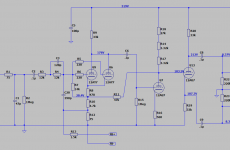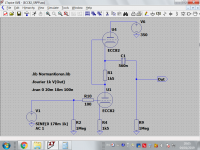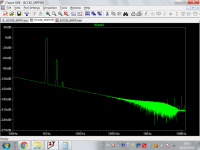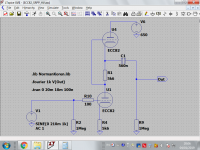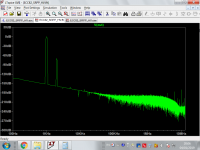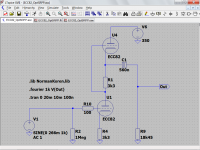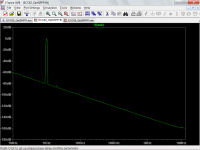I’ve asked several people and looked through a bunch of threads and still can’t find any one who has a decent description of how a Toshiba 12AU7 sounds overall I’ve been told they sound similar to a Telefunken ,a GE and a Mullard I actually have a pair but I have to finish fixing my bench supply and get it back together to listen .
Any help would be appreciated!
Any help would be appreciated!
In a good circuit they won't have a sound.
Ordinarily I tend to agree with this statement, but maybe it should be, "in a well designed circuit with well designed tubes, they will all sound the same."
The 12AU7 is sort of odd in the fact that it is somewhat nonlinear. The Mu curve varies from Mu=12 at 300 volts and 2 mA to 21 at 100 volts and 9 mA. The curves for plate voltages in the 100 volt range are non - monotonic. If they were all identical in their behavior, this could be accommodated for, but they are not. Tube to tube variation among identical tubes is large enough to see differences in the same amp.
These tubes will distort, and the amount and nature of the distortion vary considerably over the range of operating points where they would normally be used for class A audio amps. The nature of the distortion could vary quite a bit from a small shift in bias current in the same tube.
It is conceivable that two identical tubes could exhibit slightly different distortion characteristics in the same circuit due to their inherently slightly different operating points. Add the several different constructions of 12AU7's that exist, long flat plate, short box plate..... and it is easy to see how an audible difference could exist.
I have a LOT of 12AU7's, most used military pulls, but plenty of NOS examples. There are also several "premium" "military" and "computer" variants as well. The 6189 and 6189A are "premium 12AU7's" and the 5963 is a "computer 12AU7." There are others whose numbers I don't remember now.
A long time ago, I set up a simple RC coupled amplifier and adjusted it for lowest THD with a NOS RCA 12AU7 in the socket. I then stuffed a bunch of "12AU7s" and their variants through the board until the socket wore out, all while watching an FFT analysis of the distortion spectra. My plan was to find the best operating point for a 12AU7......My conclusion was, there is none. They are, as others have stated, all over the place. Some can not deliver a clean signal of more than 10 volts P-P, while others can be tweaked down into mostly low levels of 2H. Unfortunately there was no sweet spot where all tubes behaved good. The most consistent was the 5963.
This led me to agree with the "all 12AU7s suck" rule years ago, but I planned to revisit my testing, and as yet never have.
This led me to agree with the "all 12AU7s suck" rule years ago, but I planned to revisit my testing, and as yet never have.
I am afraid you are right with all you wrote. Let me add a few more comments here.
- The fact that it has low Mu in general leads to other complications. If we use it in an amplifying stage then a cathode bypass capacitor is almost inevitable for some gain. The lack of local feedback in that case helps you enjoy the nonlinearity of the tube to its full extent, and now we have another variable in the chain that may affect the sound - the type and the age of the capacitor as it needs to be a lytic cap or at least an OS-CON.
- The 12A*7 family consists of small double triodes with short cathode and low heater current. The 12AU7 was designed for high bias current in its class so the cathode works closer to its emission limits relative to other tubes. This hardly ensures long lifetime, and may also explain why the 12AU7/ECC82 based driver stages tend to compromise dynamics.
I personally would not use 12AU7 for any other purpose than a cathode follower in a preamp output stage. I suspect this was the original design purpose anyway as it is most likely the only small triode that can drive a 600 Ohm line.
Too bad that decent driver tubes are not available new (or if yes, then from a single source only), and designers are forced to use the 12A*7 family. Jean Hiraga complained 35 years ago that E80CC had no longer been manufactured, and this situation has just become worse since then due to the lower demand for tubes.
The 12AU7 makes a poor cathode follower because it has low transconductance and low mu. I suspect that people use it as a CF because they wrongly think that the low anode impedance in grounded cathode use implies low output impedance in CF use. In most places that a 12AU7 is used as a CF better performance would be had from a 12AT7.paczeltf said:I personally would not use 12AU7 for any other purpose than a cathode follower in a preamp output stage. I suspect this was the original design purpose anyway as it is most likely the only small triode that can drive a 600 Ohm line.
The original design purpose of the 12AU7 was to squash two 6C4 VHF power triodes into a single envelope, to make a general purpose double triode e.g. for TV oscillator duty. Like the 6C4, 12AU7 makes a good RF mixer.
The 12AU7 makes a poor cathode follower because it has low transconductance and low mu. I suspect that people use it as a CF because they wrongly think that the low anode impedance in grounded cathode use implies low output impedance in CF use. In most places that a 12AU7 is used as a CF better performance would be had from a 12AT7.
This is true as long as you know the load impedance and it is not too low (>10 kOhms). On the other hand, the 12AU7 can be biased at much higher anode currents, which can drive more complex loads. In my particular example the impedance of interconnects and power amp input stage are both unknown.
Anyway, if can't find any good audio application for 12AU7, what is the conclusion? Put a ban on it?
... The nature of the distortion could vary quite a bit from a small shift in bias current in the same tube. ...
I agree with this. I apparently don't hear distortion unless it is pretty bad, so it's not a big deal to me, but I have played around with 12AU7 some, and it is easy enough to see this effect, even with very mediocre test equipment.
OP doesn't say what the 12AU7 is doing, but I would think that ordinary line voltage variations could possibly move these things around enough to change the sound, if you have sensitive ears.
I think Toshiba makes good tubes.
Win W5JAG
People are free to use or not use any valve, including 12AU7. I am not sure how a ban would be policed.
I did not mean my comment to be taken seriously
Anyway, if can't find any good audio application for 12AU7, what is the conclusion? Put a ban on it?
Save the 12AU7s for your RF or quasidigital projects. 5963s feature better audio performance with 12AU7-like specs. It was never a design consideration for me as 6FQ7s are even better audio performers and cheaper than 'AU7s, of which I have none in my collection.
I've been buying every cheap 6CG7 and 6FQ7 that I find, hard to beat a 6SN7 in a smaller bottle with an internal shield 
The 6FQ7 is the same as the 6CG7, usually without the shield, although there are piles of them out there that are dual marked, and can come with or without the shield. Both are available in an attractive "clear top" variant, if such things appeal to you.
6GU7 is another nice one, but it will need circuit changes due to different mu, Rp, and bias requirements. On the bright side it'll drop right in for a 6DJ8 in lower voltage (~185 or so) applications
http://www.mif.pg.gda.pl/homepages/frank/sheets/135/6/6GU7.pdf
https://www.diyaudio.com/forums/tubes-valves/257284-improve-6b4g-push-pull-circuit-6.html#post3952307
The 6FQ7 is the same as the 6CG7, usually without the shield, although there are piles of them out there that are dual marked, and can come with or without the shield. Both are available in an attractive "clear top" variant, if such things appeal to you.
6GU7 is another nice one, but it will need circuit changes due to different mu, Rp, and bias requirements. On the bright side it'll drop right in for a 6DJ8 in lower voltage (~185 or so) applications
http://www.mif.pg.gda.pl/homepages/frank/sheets/135/6/6GU7.pdf
https://www.diyaudio.com/forums/tubes-valves/257284-improve-6b4g-push-pull-circuit-6.html#post3952307
Last edited:
The ECC82/12AU7 is not *that* bad, a plain SRPP gives -64dB distortion for 1V output, mainly second harmonic.
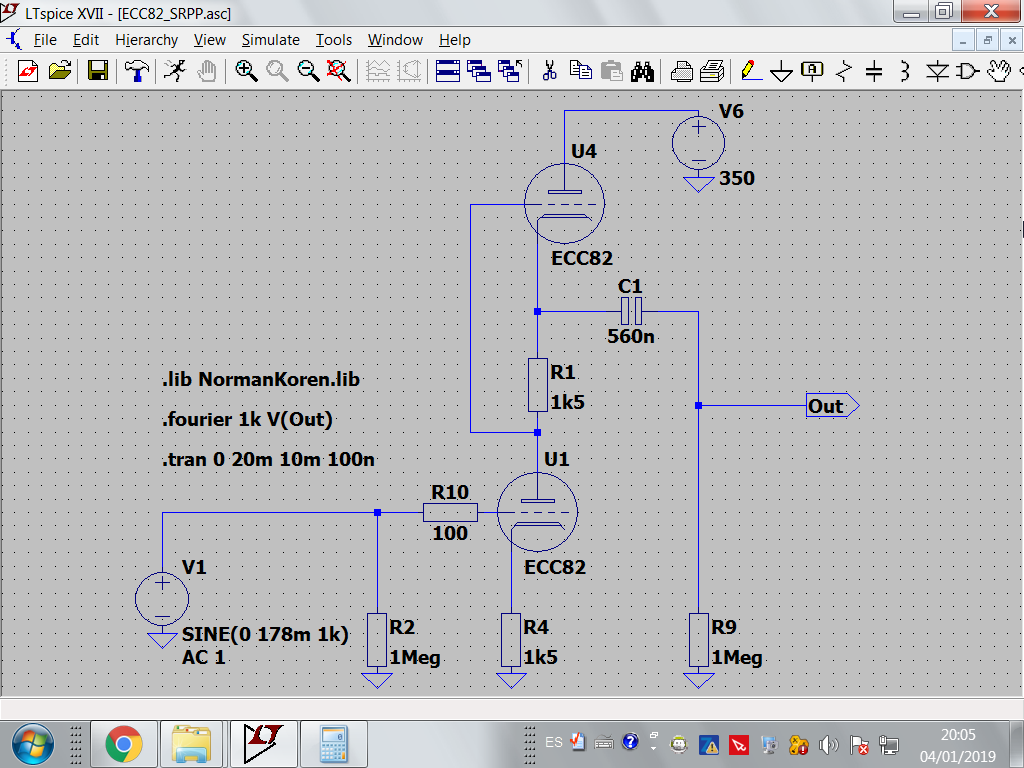
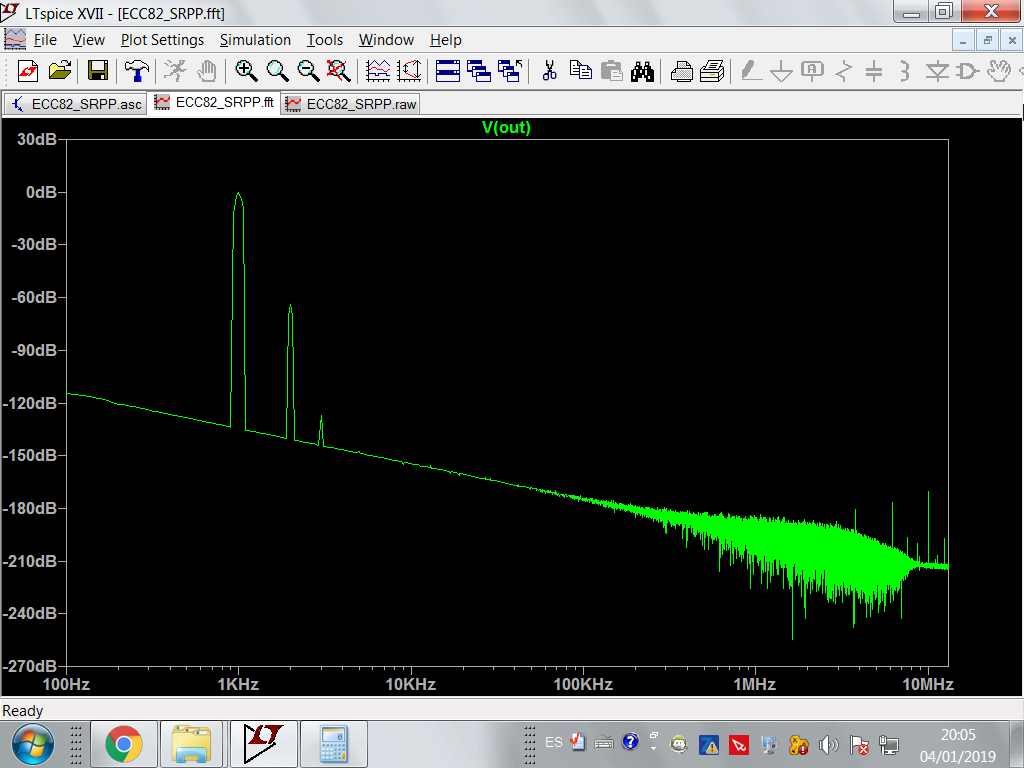
Increasing supply voltage, distortion decreases to about -70dB, mainly second harmonic.
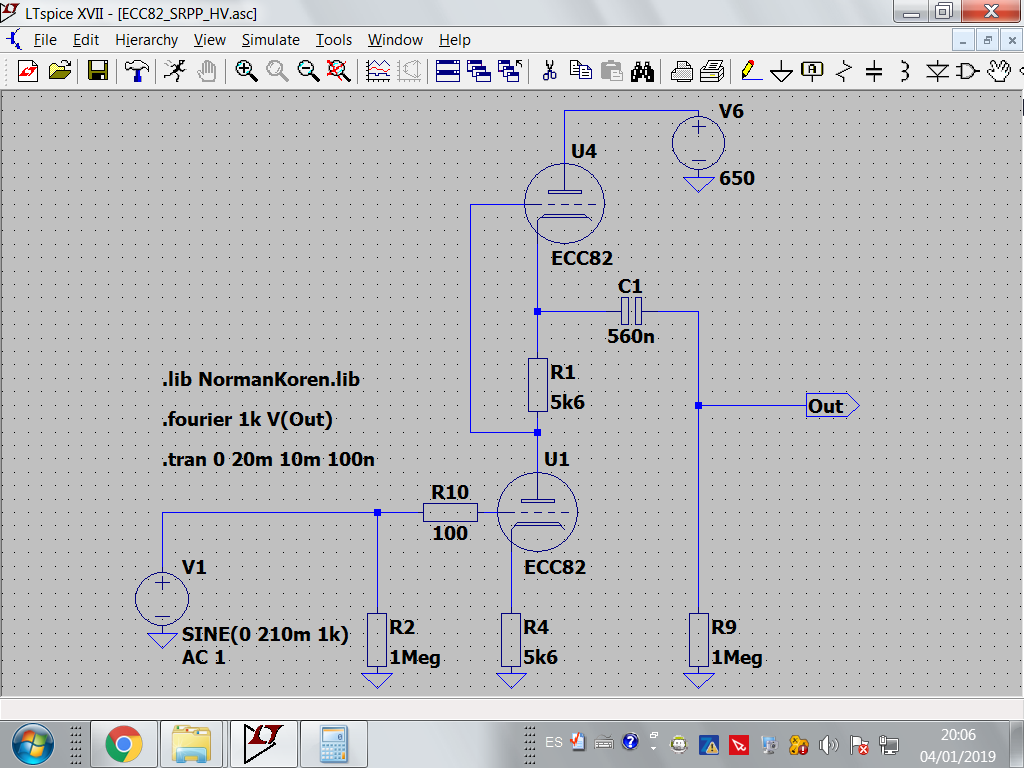
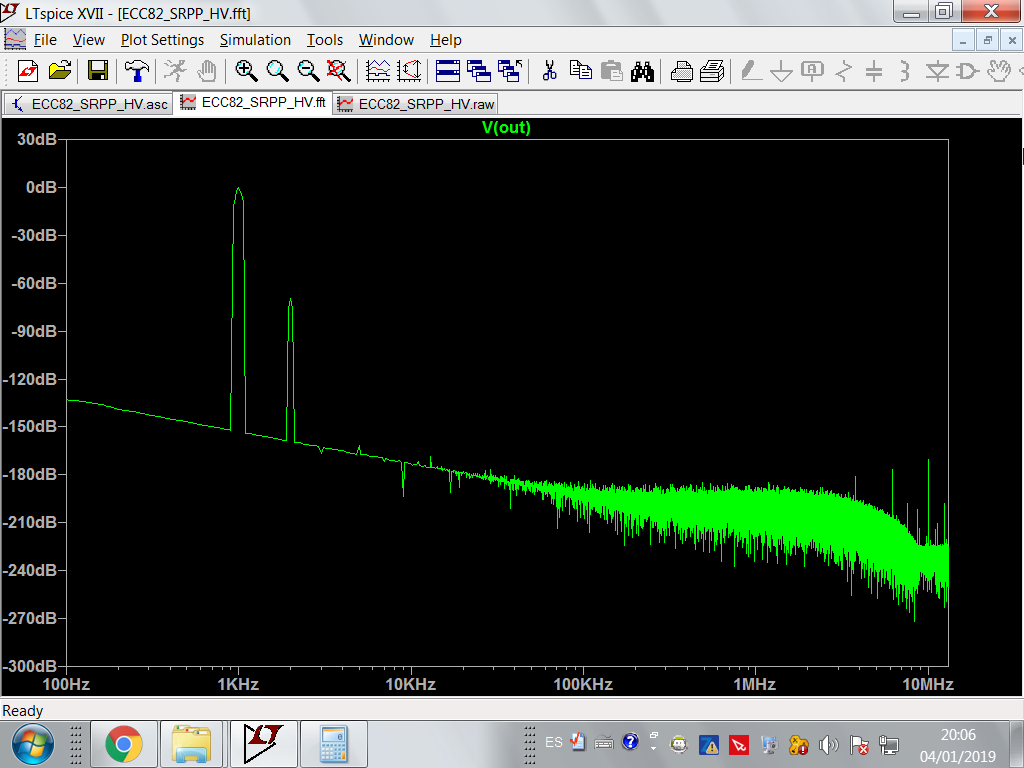
Increasing supply voltage, distortion decreases to about -70dB, mainly second harmonic.
Attachments
I know that people don't like the ECC82/12AU7, but in the right circuit it can be gorgeous.
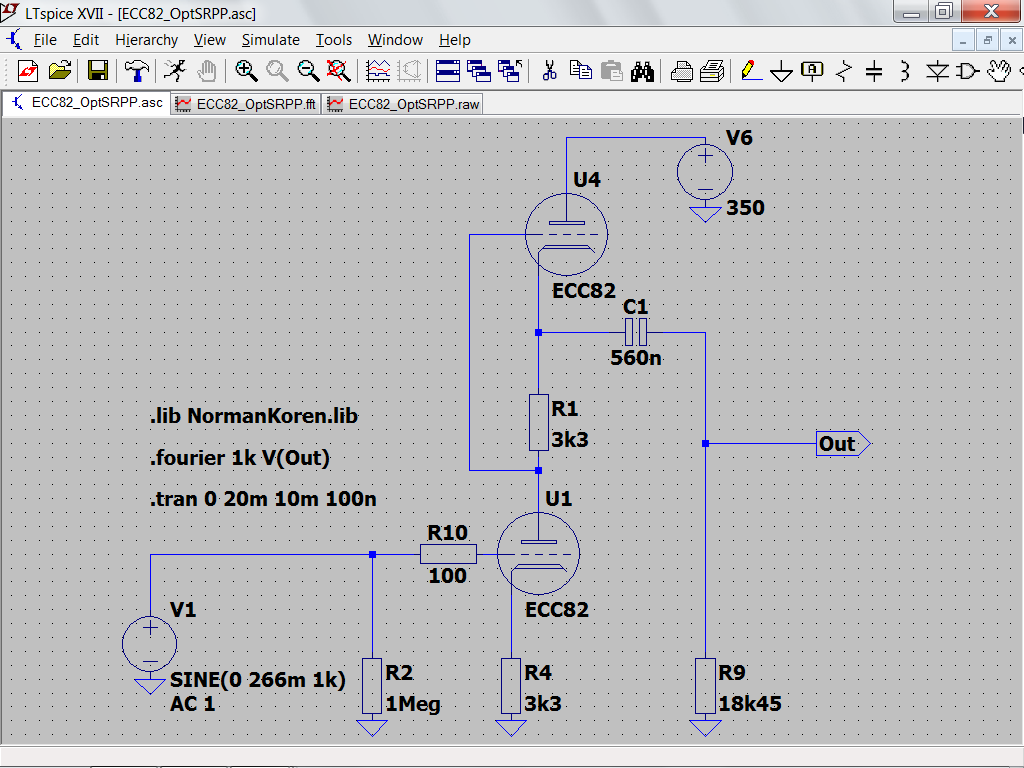
In an optimized SRPP at 1V out, distortion is about -84dB, mainly second harmonic.
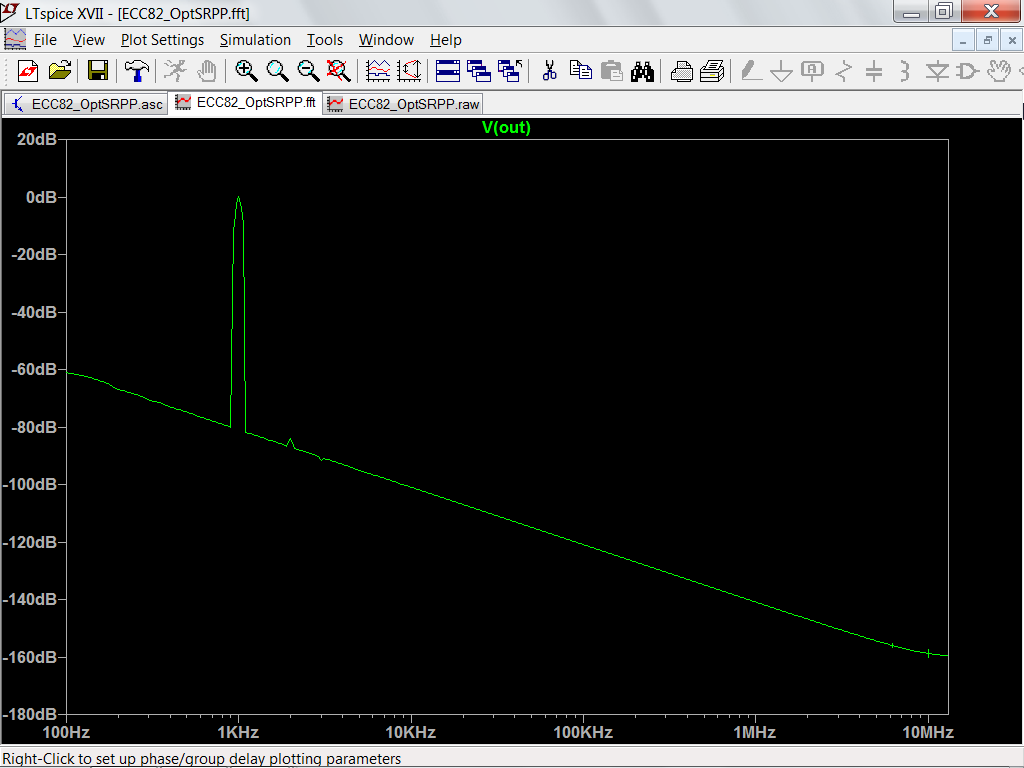
Those are just simulations, but these are real measurements
https://www.diyaudio.com/forums/tubes-valves/74903-survey-aikido-distortion-18.html#post4721214
https://www.diyaudio.com/forums/tubes-valves/74903-survey-aikido-distortion-19.html#post4722239
In an optimized SRPP at 1V out, distortion is about -84dB, mainly second harmonic.
Those are just simulations, but these are real measurements
https://www.diyaudio.com/forums/tubes-valves/74903-survey-aikido-distortion-18.html#post4721214
https://www.diyaudio.com/forums/tubes-valves/74903-survey-aikido-distortion-19.html#post4722239
Attachments
In the late 1990s I had a small run of 12AU7A SRPP line stages which sounded pretty good with the right 12AU7A installed and THD measured around -70dB relative to 2Vrms output. The results were almost entirely dependent on the tube used - the best were expensive European imports from the usual suspects.
A similar design with the 6SN7 was 10 - 15dB better at the same amplitude.
Note that similar/dissimilar mu-follower based designs exhibited better linearity in general.
I still use a hybrid version of the mu-follower and dropped the SRPP a decade ago.
As an aside I have found the correlation between predicted distortion in Spice and the real world to be remarkably poor - it is often 0dB or more worse than predicted. These days I can generate my own models directly from my UTracer and I find slightly better correspondence between predicted and real world as long as the actual operating conditions closely match what the curve tracer indicates is the best range of operating values. (And I have done a good enough job setting up the conditions for measurement that the model is based on - and that's not always the case unfortunately.)
A similar design with the 6SN7 was 10 - 15dB better at the same amplitude.
Note that similar/dissimilar mu-follower based designs exhibited better linearity in general.
I still use a hybrid version of the mu-follower and dropped the SRPP a decade ago.
As an aside I have found the correlation between predicted distortion in Spice and the real world to be remarkably poor - it is often 0dB or more worse than predicted. These days I can generate my own models directly from my UTracer and I find slightly better correspondence between predicted and real world as long as the actual operating conditions closely match what the curve tracer indicates is the best range of operating values. (And I have done a good enough job setting up the conditions for measurement that the model is based on - and that's not always the case unfortunately.)
In the late 1990s I had a small run of 12AU7A SRPP line stages which sounded pretty good with the right 12AU7A installed and THD measured around -70dB relative to 2Vrms output. The results were almost entirely dependent on the tube used - the best were expensive European imports from the usual suspects.
Hi Kevin, good to see you around here!
Your results are remarcable, as ever, just out of curiosity, was it a plain SRPP?
A similar design with the 6SN7 was 10 - 15dB better at the same amplitude.
Note that similar/dissimilar mu-follower based designs exhibited better linearity in general.
I still use a hybrid version of the mu-follower and dropped the SRPP a decade ago.
So far I didn't hear something more transparent as the SRPP stage, but never say never.
As an aside I have found the correlation between predicted distortion in Spice and the real world to be remarkably poor - it is often 0dB or more worse than predicted. These days I can generate my own models directly from my UTracer and I find slightly better correspondence between predicted and real world as long as the actual operating conditions closely match what the curve tracer indicates is the best range of operating values. (And I have done a good enough job setting up the conditions for measurement that the model is based on - and that's not always the case unfortunately.)
Please look at the last simulation, it is within 1dB with respect to the real measurement.
Your method is far more accurate though.
- Status
- This old topic is closed. If you want to reopen this topic, contact a moderator using the "Report Post" button.
- Home
- Amplifiers
- Tubes / Valves
- Toshiba 12AU7’s
